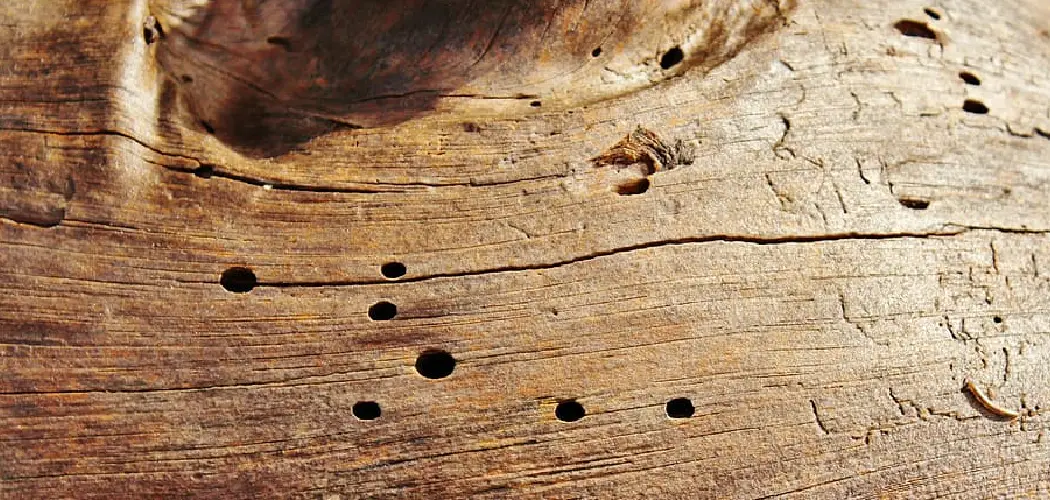Are you worried that woodworm might be eating away at your furniture? It’s important to check for signs of an active infestation. Here are some tips on how to tell if a woodworm is active. If left unchecked, woodworm can wreak havoc on wooden buildings, furniture, and home décor items.
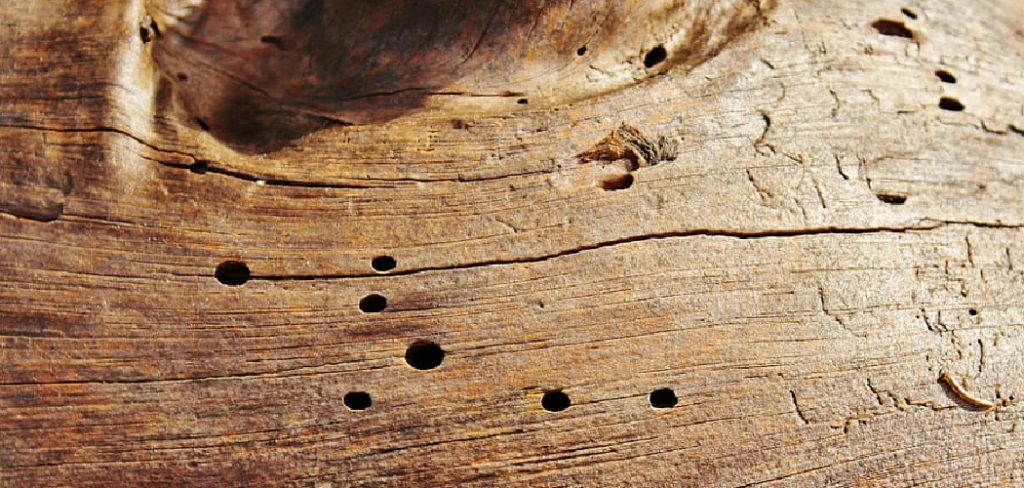
However, not all woodworms are active, and some signs that indicate they may be present can easily be mistaken for something else. To help you accurately determine if woodworm is a problem in your home, it is important to understand what the signs of a woodworm infestation look like – identifying them early is key to preventing extensive damage.
In this blog post, we’ll walk through how to tell if woodworm is active infestation by examining the tell-tale signs that these pesky bugs are eating away at your prized possessions!
What Will You Need?
In order to test for woodworm activity, you’ll need the following items:
- A flashlight
- A magnifying glass
- A tape measure or ruler.
Once you have the necessary tools, you’re ready to begin investigating!
10 Easy Steps on How to Tell if Woodworm is Active
Step 1: Look For Holes In Your Furniture And Woodwork
The first step in determining if woodworm is active is carefully examining your furniture and woodwork. Take a look at any visible holes or tunnels that have been made by woodboring insects – these are typically round or oval and no larger than 5mm wide. If there are several of these small holes in a single piece of furniture or timber, this could indicate an active infestation.
Step 2: Check For Powdery Dust On The Surface
The next step is to look for powdery dust, called frass, on the surface and around any holes in your furniture or woodwork. This dust is made up of tiny particles of timber which larvae have eaten away. If you find a lot of powdery frass near an area with holes, there’s a good chance that woodworms are active in the area.
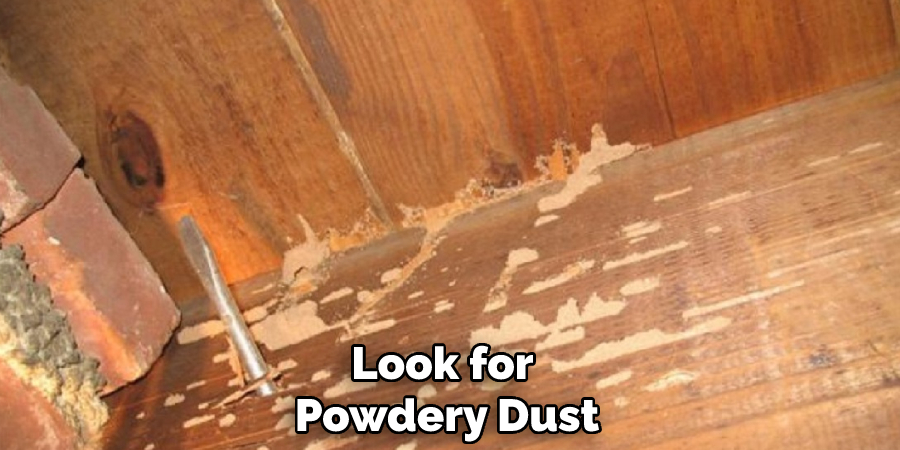
Step 3: Look Underneath Any Furniture Pieces
If you suspect that woodworm might be active in and around your furniture, it’s also important to check underneath pieces. Take a flashlight and magnifying glass under each piece and look for signs of activity, such as small tunnels or piles of frass. You may also be able to see larvae or adult beetles crawling around if they’re actively infesting the furniture.
Step 4: Measure The Length Of Any Tunnels
If you have found tunnels in your furniture or woodwork, measuring how long they are is important. Use a tape measure or ruler and check how many inches each tunnel reaches. This will help you determine how active the infestation is and how much damage has been done.
Step 5: Examine Any Holes For Signs of Fresh Activity
If there are any holes in your furniture, look closer at them. Run your finger along the edges of each hole. If the timber feels soft, smooth, and powdery, this could indicate that the woodworm is still actively eating away at the wood.
Step 6: Look For Any Live Woodworms
If you’re able to move furniture or other objects from your home, it can be useful to take them outside and look for any live woodworms in direct sunlight. This will help you determine how active the infestation is and how much damage has been done. Additionally, you can check for the presence of adult beetles, as they are a sure sign that woodworm activity is ongoing.
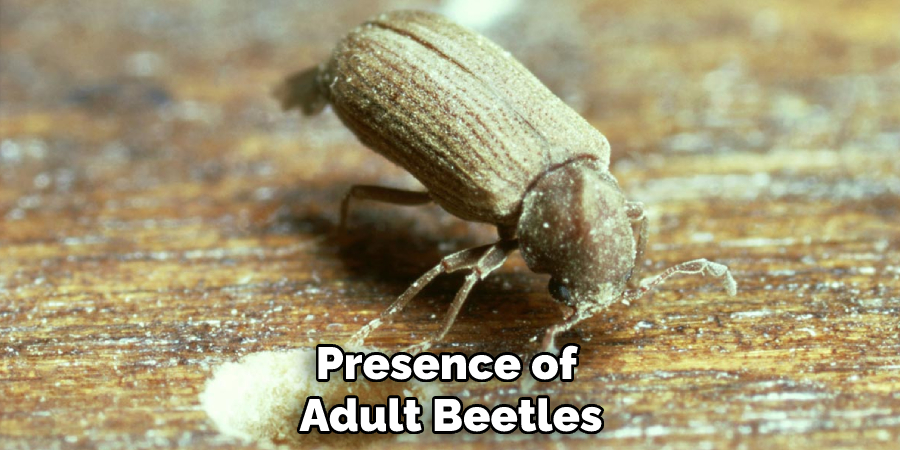
Step 7: Look For Adult Beetles
Adult beetles are another sign that there may be an active infestation of woodworms in your home. These insects typically emerge from their larvae stage during summer – look for small black or brown beetles on window sills or near light sources. If you find any, this indicates that they are actively infesting your home.
Step 8: Check Areas Of High Humidity
Woodworms prefer humid environments, so it’s important to check areas of high humidity for any signs of activity. Bathrooms, basements, and attics are all common places where woodworm tend to thrive. There may be an active infestation if you notice any holes or tunnels in these areas.
Step 9: Listen For Rustling Noises
If you think you have an active woodworm infestation but can’t seem to find any physical evidence, it may be worth listening out for rustling noises coming from within the timber. This could indicate that live woodworms are eating away at it inside the wood. Ensure that you keep an ear out for these noises, especially in areas of high humidity.
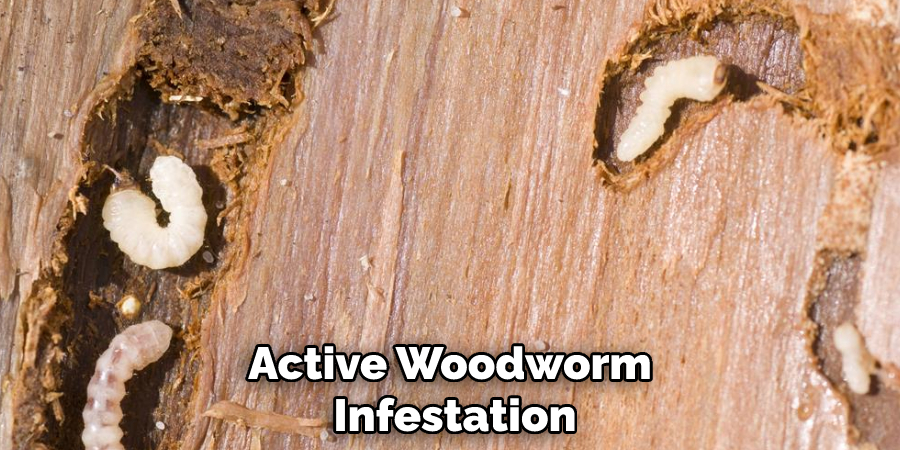
Step 10: Contact A Pest Control Professional
If you’re still unsure tell if woodworm is active in your home, it may be best to contact a pest control professional. They will be able to assess the situation and advise on tackling the infestation effectively. Moreover, they will be able to provide more information on whether woodworm is active and how to prevent them from becoming a problem.
These steps should help you determine how active any woodworm infestation is in your home, allowing you to take appropriate action. Remember to act quickly if you suspect that there may be an active infestation – this will help minimize any damage caused by these pests.
5 Additional Tips and Tricks
- 1Look for sawdust near the holes. Woodworm larvae often leave frass (wood dust and other debris) around the holes they have made. Seeing sawdust or other debris in or near the hole is a good indication that woodworm is present.
- 2Check for live beetles. Adult woodworm beetles emerge from their burrows when the weather is warm and can usually be seen flying around the room during the spring and summer months
- 3Look for discolored patches on your wooden furniture. Active woodworms will eat away at your timber, leaving behind small tunnels which can appear as discolored sections on your furniture’s surface.
- Listen out for tapping sounds coming from inside the wood. As woodworm larvae burrow, they make a tapping sound that can be heard inside the timber.
- Check for small piles of pellets around your furniture. Woodworm larvae produce little pellets (called frass) that drop to the floor as they tunnel through the timber for food. If you find these piles of pellets near your furniture, it’s likely that there is an active woodworm present.
By using these tips and tricks, you can determine whether or not there is an active infestation of woodworm present in your home and take steps to get rid of them quickly and effectively before further damage is caused.
5 Things You Should Avoid
1. Avoid using old and second-hand furniture in areas with high humidity, as this is the ideal environment for woodworm to thrive.
2. Avoid keeping any kind of timber or wooden materials indoors for a long time, especially if it has already been exposed to moisture.
3. Do not use woodworm sprays or treatments without consulting a professional first since they can further irritate and worsen the infestation.
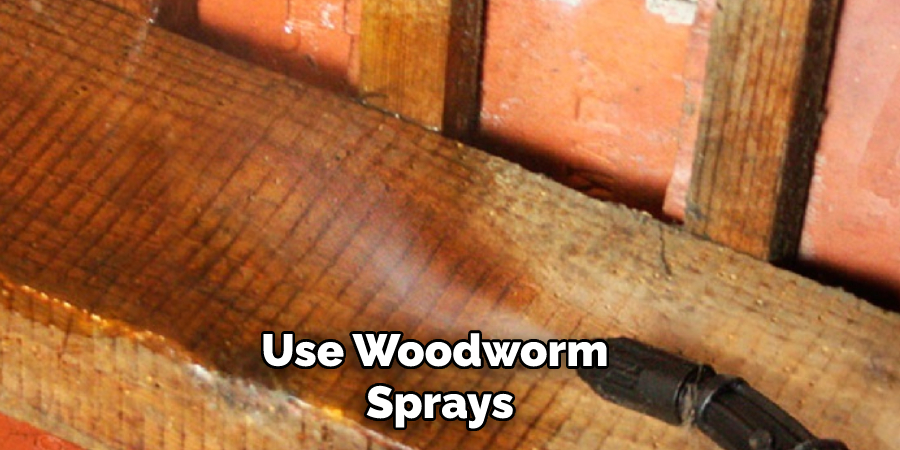
4. Never store wood in damp basements or cellars – damp conditions around your home could attract woodworms even when no other food source is present.
5. Don’t leave any untreated material outside where it may become wet from rain or snow – these are the perfect conditions for woodworms to thrive in.
If you take these steps, you will protect your home from woodworm infestation.
What Kills Woodworms Naturally?
If you want to get rid of woodworm without using chemicals, you can try several natural methods. Heat treatment is one of the most effective: expose the wood to temperatures above 75°C for at least 30 minutes to kill both larvae and adults. Alternatively, cold treatments can be used; expose the infested wood to a temperature below -20°C for at least 24 hours to kill off any insects present.
Another possible solution is to use essential oils such as tea tree oil or eucalyptus oil – mix some of these oils with water and spray the affected area directly. This natural method has been found to be effective against woodworm infestations. Finally, the borax powder can also be used to kill off woodworm – simply sprinkle the powder in the affected areas and wait for the results.
Using any of these natural methods, you can eliminate your woodworm infestation without resorting to chemical treatments. However, it’s important to note that all of these methods may require multiple applications before the problem is solved.
Conclusion
Knowing when a woodworm is active can be the difference between properly treating or neglecting it. If you become suspicious of a woodworm infestation, seek out expert help as soon as possible.
A professional can inspect your home and determine how serious the problem is and what should be done to address it. Ignoring a woodworm problem will only allow it to wreak havoc in your home, so getting on top of the issue early is important.
Additionally, protecting against future issues by regularly checking for signs of activity and treating the existing problem could save a lot of hassle in the future.
Hopefully, the article on how to tell if woodworm is active has been helpful in informing you how to recognize and deal with an infestation. Thanks for reading!

